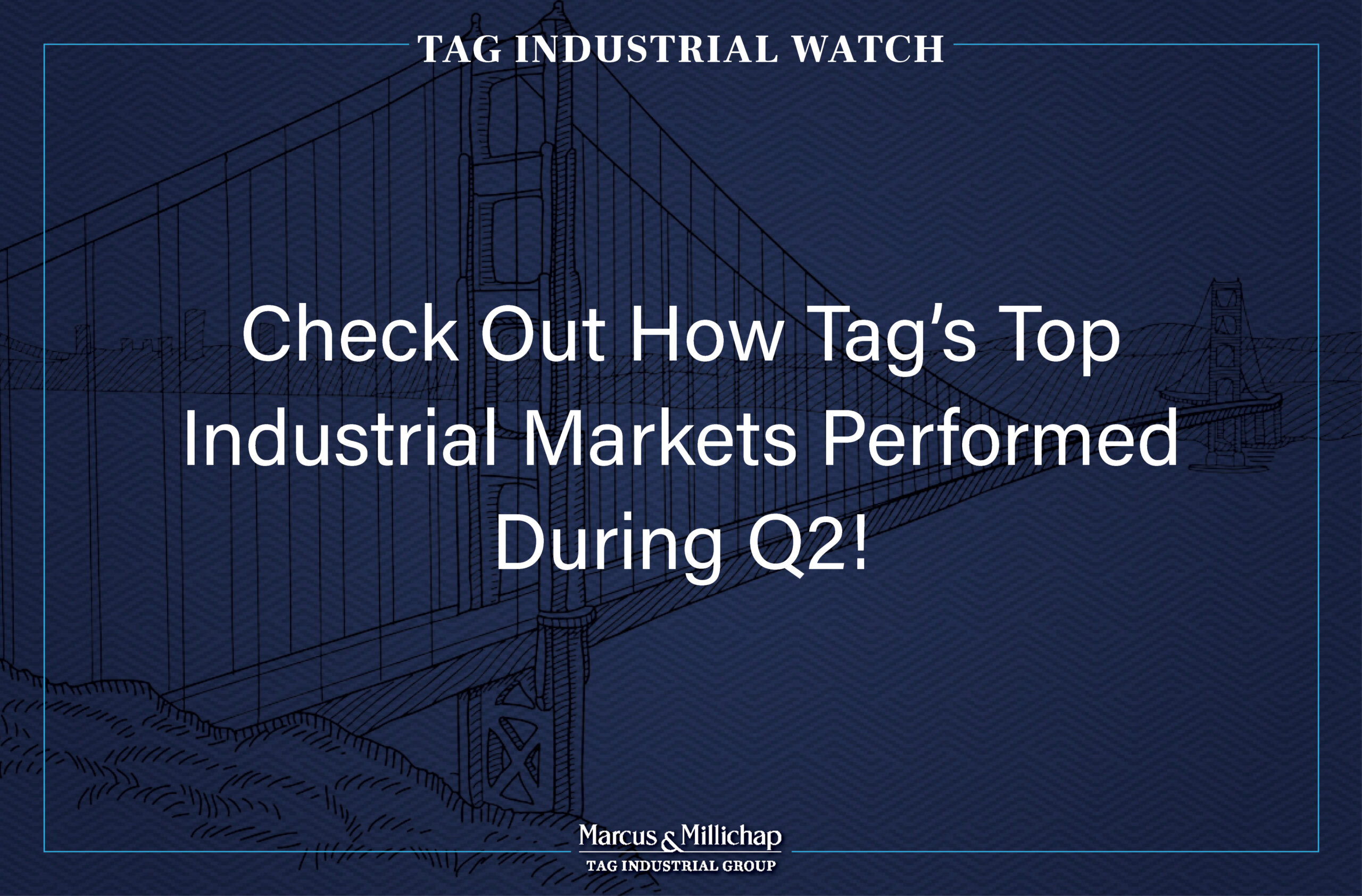This week, we continue with the industrial market’s Q2 report card by recapping TAG’s top markets. Starting in the Midwest, Chicago’s industrial demand contracted for the first time since Q2 2011, helping to push the vacancy rate up by 20 basis points to 6.0%. At 4.2%, annual rent growth continues to decelerate but is twice the national level. Moving down to America’s Heartland, the vacancy rate between Kansas City and Saint Louis jumped 60 basis points to 5.0% as new supply outpaced demand by a factor of 4:1. Rent growth slowed to 3.5%, matching the lowest level since the start of the pandemic.
In Dallas-Fort Worth, vacancies held steady at 9.4% as supply slightly outpaced demand. Despite the good news, annual rent growth slowed sharply to 3.6% in DFW, slipping to the lowest level since Q1 2013. Down in Houston, the vacancy rate rose by 30 basis points to 7.0%, but demand managed to stay positive even as oil prices experienced another bumpy quarter. Rent growth ticked up to 2.2 percent, which was in line with the national average. While demand between Austin and San Antonio remained in positive territory, the excess of new supply pushed the vacancy rate up another 70 basis points to 12.4%, the highest recorded level since full market coverage began in 2005. As a result, rent growth decelerated to just 80 basis points, matching the lows seen in Q2 2011.
Moving out west to Denver, industrial demand contracted by the most since at least the turn of the 21st century, as vacancies rose by 80 basis points to a 20-year high at 9.2%. Consequently, rent growth mildly contracted by -10 basis points, representing the first annual decline since Q4 2010. Finishing up with Los Angeles, the 11-quarter streak of negative absorption that was snapped in Q1 was unfortunately short-lived. The contraction in Q2 helped to increase vacancies by 40 basis points to 6.5%, marking a record high. While availability in the City of Angels remains lower than the national average, rent growth contracted by a historic low of -5.0%, taking out the lows from the Great Recession.
While it is easy for industrial investors to respond to the market by sitting on the sidelines, now is the time to take advantage of historical high property values before the lending environment reflects market conditions.
I N D U S T R I A L N E W S
Industrial Construction Faces Decade Low
As Tariffs Bite
GlobeSt.com – July 8, 2025
Read More
Prologis CEO: Immigration Polices To
‘Radically’ Raise Construction Costs
Bisnow – July 17, 2025
Read More
Trump Announces ‘Massive’ Trade Deal
With Japan, Setting Tariffs at 15%
CNBC – July 22, 2025
Read More
Has The Dollar Index Found A Bottom?
Yahoo!finance – July 22, 2025
Read More
Wall Street Braces For Deluge Of Treasury
Bills, a Crucial Test Of Market Demand
MarketWatch – July 23, 2025
Read More
R E G I O N A L N E W S
Bridge Logistics Adds Three-Building
Inland Empire West Portfolio
Connect CRE – July 21, 2025
Read More
Tesla Shares Drop 8% After Auto
Sales Plunge Again
CNBC – July 24, 2025
Read More
DFW Defies U.S. Industrial Slowdown With
Build-Now, Fill-Later Mentality
Bisnow – July 22, 2025
Read More
Demand For Northern Cal Industrial
Plummets Over Economic Fears
GlobeSt.com – July 9, 2025
Read More
Industrial Investment Activity Continues
To Rebound As Absorption Softens
Mile High CRE – July 22, 2025
Read More
